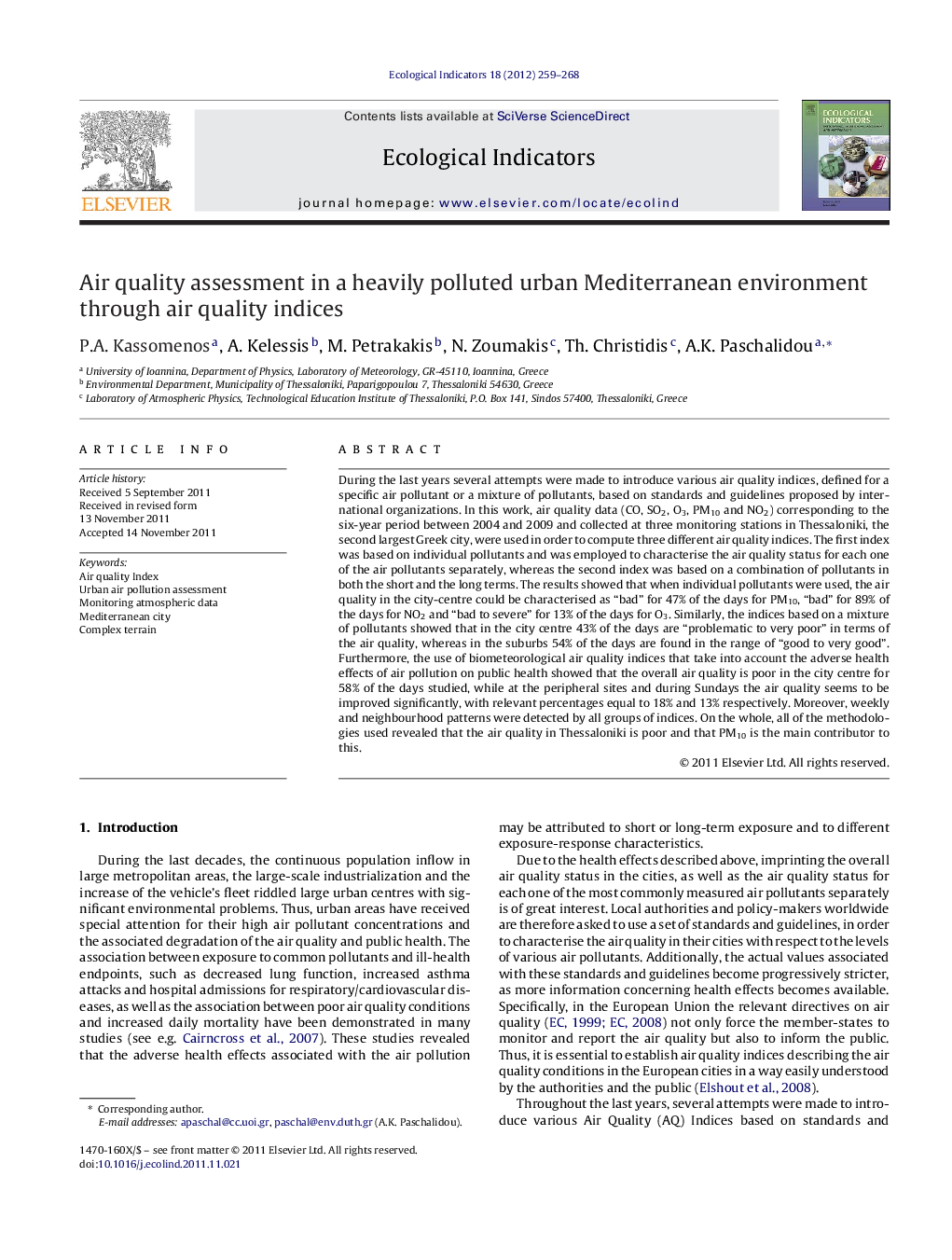| کد مقاله | کد نشریه | سال انتشار | مقاله انگلیسی | نسخه تمام متن |
|---|---|---|---|---|
| 4373783 | 1617182 | 2012 | 10 صفحه PDF | دانلود رایگان |

During the last years several attempts were made to introduce various air quality indices, defined for a specific air pollutant or a mixture of pollutants, based on standards and guidelines proposed by international organizations. In this work, air quality data (CO, SO2, O3, PM10 and NO2) corresponding to the six-year period between 2004 and 2009 and collected at three monitoring stations in Thessaloniki, the second largest Greek city, were used in order to compute three different air quality indices. The first index was based on individual pollutants and was employed to characterise the air quality status for each one of the air pollutants separately, whereas the second index was based on a combination of pollutants in both the short and the long terms. The results showed that when individual pollutants were used, the air quality in the city-centre could be characterised as “bad” for 47% of the days for PM10, “bad” for 89% of the days for NO2 and “bad to severe” for 13% of the days for O3. Similarly, the indices based on a mixture of pollutants showed that in the city centre 43% of the days are “problematic to very poor” in terms of the air quality, whereas in the suburbs 54% of the days are found in the range of “good to very good”. Furthermore, the use of biometeorological air quality indices that take into account the adverse health effects of air pollution on public health showed that the overall air quality is poor in the city centre for 58% of the days studied, while at the peripheral sites and during Sundays the air quality seems to be improved significantly, with relevant percentages equal to 18% and 13% respectively. Moreover, weekly and neighbourhood patterns were detected by all groups of indices. On the whole, all of the methodologies used revealed that the air quality in Thessaloniki is poor and that PM10 is the main contributor to this.
Journal: Ecological Indicators - Volume 18, July 2012, Pages 259–268